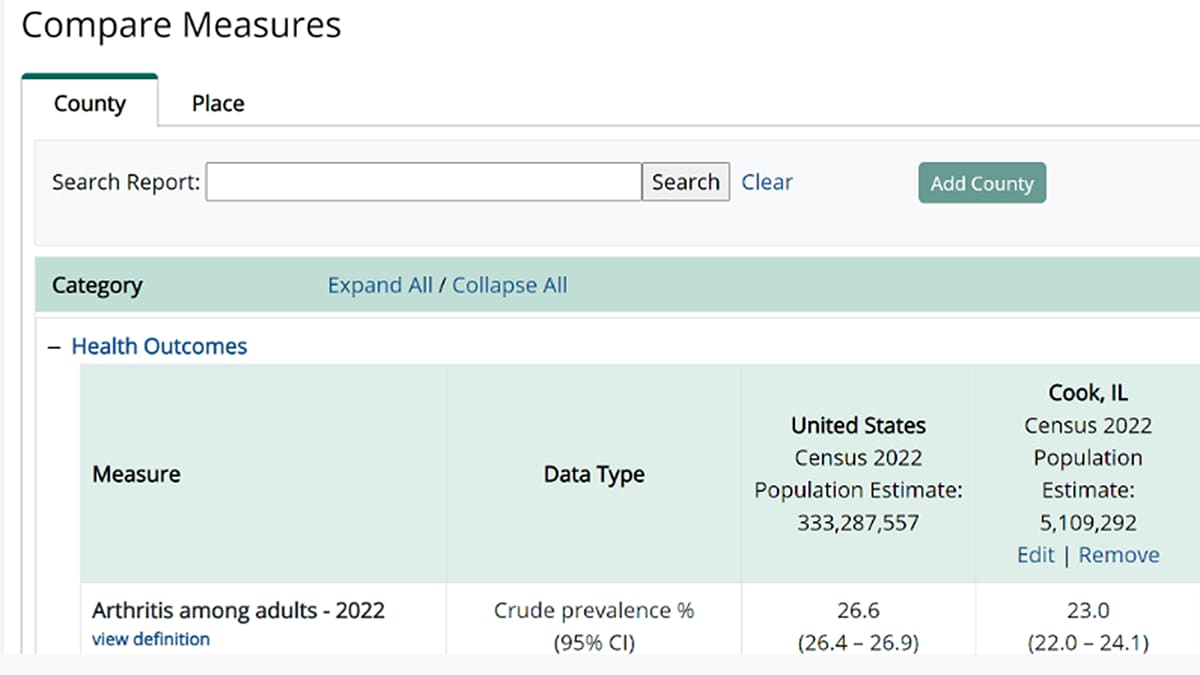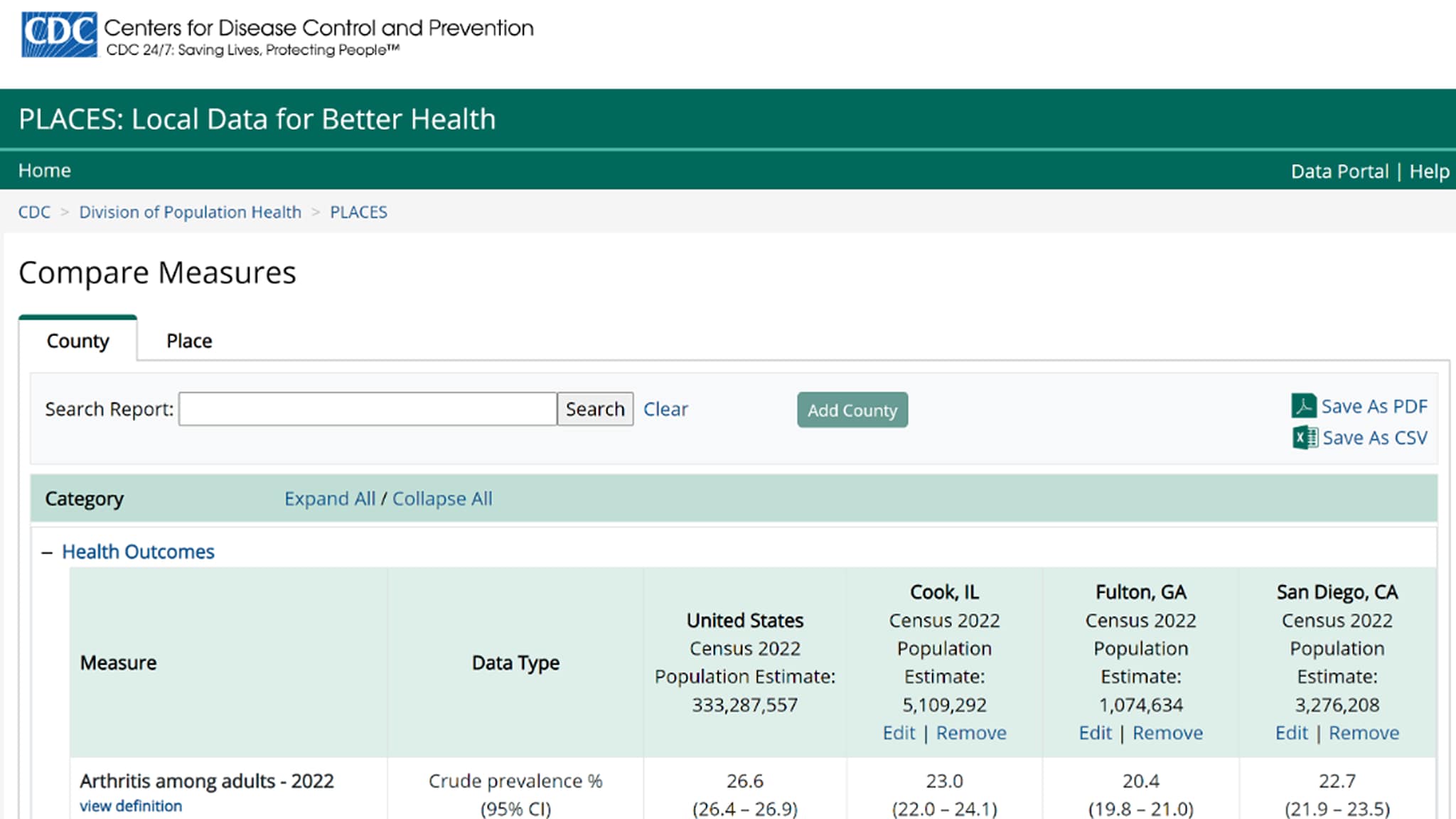What to know
The PLACES Comparison Report allows you to compare all PLACES measures for up to 3 counties or places at a time. Read about the many ways it can benefit the work of community decision makers, public health professionals, policy makers, researchers and others.

Overview
Summary
The Comparison Report is a user-friendly tool to empower you with actionable data that can drive efforts to improve public health and well-being at the local level. It helps to:
- Highlight geographic areas where certain counties or places may be faring better or worse than others on health or other measures.
- Get valuable insights into potential public health and community resources challenges or successes.
How it works
The Comparison Report allows you to view a side-by-side comparison of all PLACES measures for up to 3 counties or places. These measures include the prevalence of:
- Chronic diseases (like diabetes and heart disease).
- Health risk behaviors (like smoking and physical inactivity).
- Preventive health services (like cancer screenings).
- Health Status (like frequent mental distress)
- Disability (like hearing, mobility disability)
- Other factors influencing community health (like lack of reliable transportation).
PLACES Comparison Report
Click here to access the PLACES Comparison Report, where you can compare PLACES measures for up to 3 counties or places at a time.

Intended users and uses
Anyone can use this Comparison Report, even those without a background in data analysis can interpret the information. The tool may be particularly useful for:
- Public Health Professionals: To assess the health status of the populations they serve by comparing their county's or place's data to others.
- Policy Makers and Government Officials: To make informed decisions about resource allocation and policy development based on how their county's or place's health metrics stack up against others.
- Researchers and Academics: To compare health status across different U.S. geographic regions to inform the development of interventions.
- Healthcare Providers and Organizations: To understand the broader context of their patients' lives outside clinical settings by examining non-medical influences on health.
- Community Leaders and Advocates: To advocate for change by using data to highlight specific needs in their communities compared to others.
- General Public: For individuals interested in learning about how their county's or place's health measures up against neighboring counties or other parts of the state/country.
PLACES methodology and FAQs
Visit the Methodology page for more information about PLACES methodology, or the Frequently Asked Questions (FAQs) page to get answers to common questions about PLACES data.
How-to guides
Read the how-to guide to learn how to use the PLACES comparison report.
